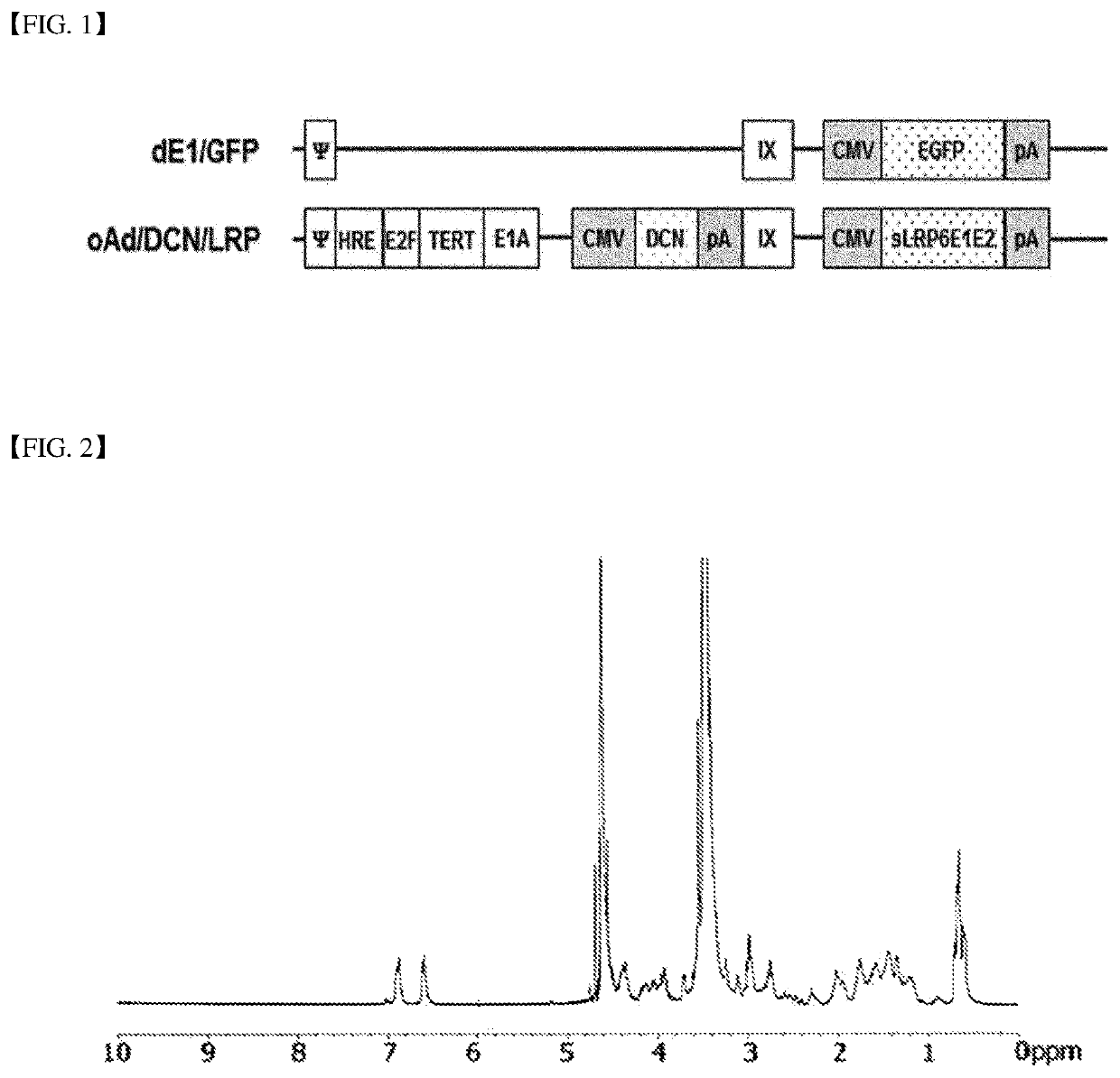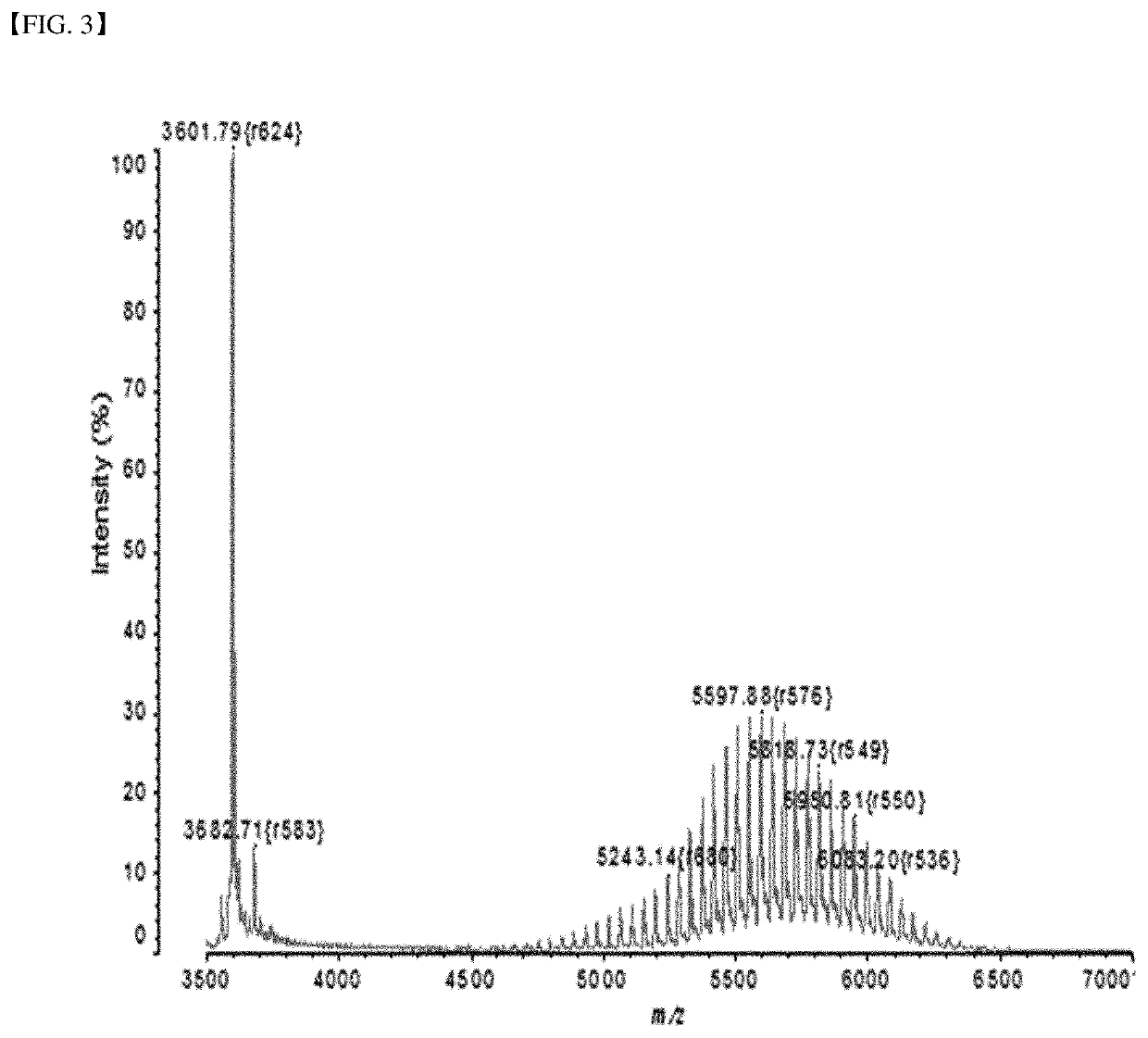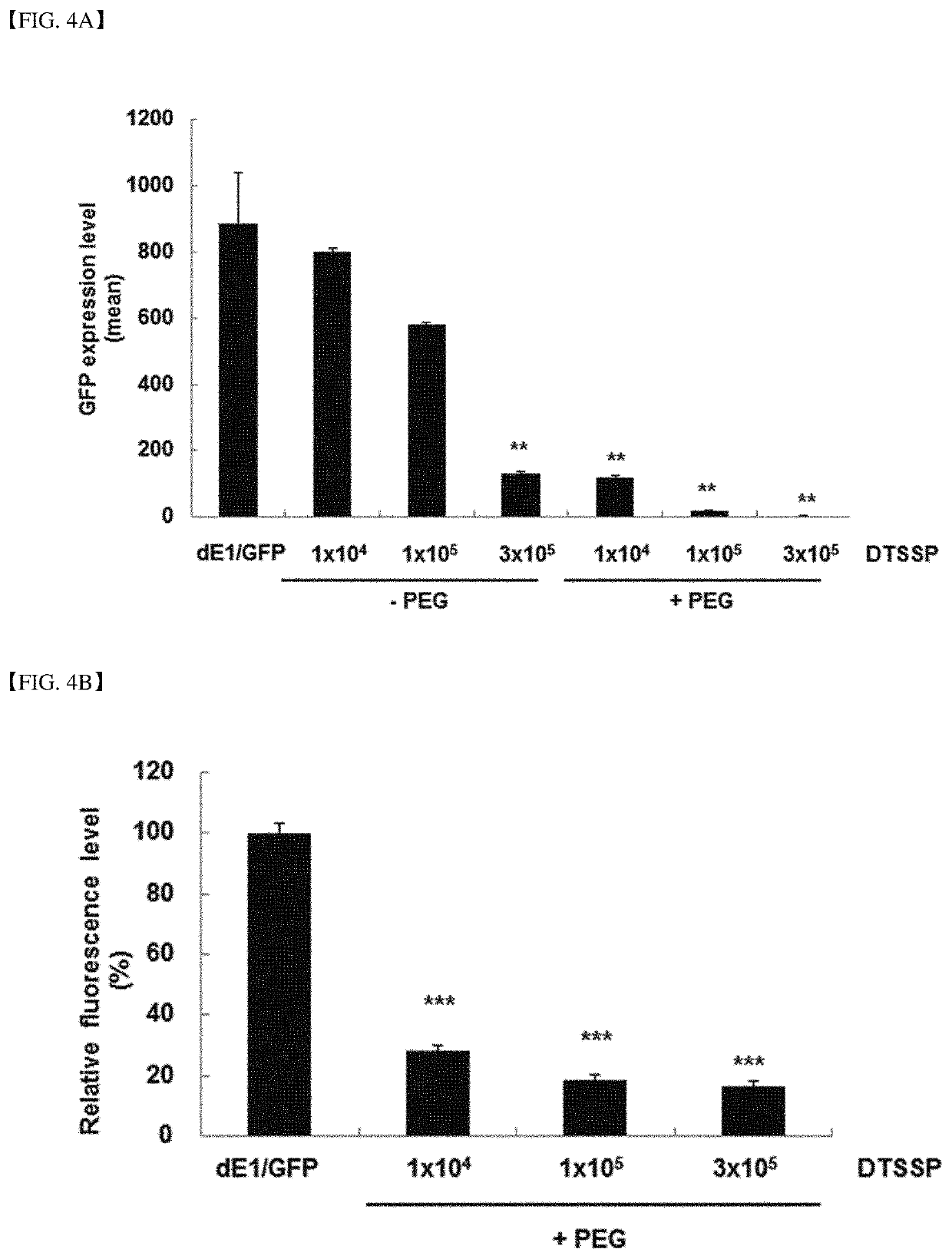Adenovirus complex for gene delivery and gene iherapy
a technology of adenovirus and complex, applied in the field of adenovirus complex, can solve the problems of poor prognosis of patients with pancreatic cancer, poor prognosis of conventional methods for treating pancreatic cancer including immunotherapy and chemotherapy, and high immunogenicity, and reduce the immunogenicity of ads
- Summary
- Abstract
- Description
- Claims
- Application Information
AI Technical Summary
Benefits of technology
Problems solved by technology
Method used
Image
Examples
examples
[0103]1. Experimental Preparation and Statistical Analysis
[0104]1-1. Cell Culture
[0105]Human pancreatic cancer cell lines (PANC-1, MIA PaCa-2 and AsPC-1), a lung adenocarcinoma cell line (A549) and an Ad5 E1-transformed embryonic kidney cell line (HEK293) were purchased from the American Type Culture Collection (ATCC, Manassas, Va.). Human normal pancreatic cells (NPCs) were purchased from Applied Biological Materials Inc. (ABM, Richmond, Canada), and stored in a Prigrow I medium (ABM). The AsPC-1 cells were stored in RPMI-1640 (Gibco BRL, Grand Island, N.Y.), and the other cells were cultured in high concentration glucose Dulbecco's modified Eagle's media (DMEM, Gibco BRL) containing 10% fetal bovine serum (FBS, Gibco BRL) in a 37° C., 5% CO2 incubator. Pancreatic cancer tissues collected from a patient were obtained from the Hanyang University Medical School. The tumor tissues were subjected to immunohistochemistry according to the protocols approved by the Institutional Review Bo...
PUM
| Property | Measurement | Unit |
|---|---|---|
| surface charge | aaaaa | aaaaa |
| particle size | aaaaa | aaaaa |
| molecular weight | aaaaa | aaaaa |
Abstract
Description
Claims
Application Information
 Login to View More
Login to View More - R&D
- Intellectual Property
- Life Sciences
- Materials
- Tech Scout
- Unparalleled Data Quality
- Higher Quality Content
- 60% Fewer Hallucinations
Browse by: Latest US Patents, China's latest patents, Technical Efficacy Thesaurus, Application Domain, Technology Topic, Popular Technical Reports.
© 2025 PatSnap. All rights reserved.Legal|Privacy policy|Modern Slavery Act Transparency Statement|Sitemap|About US| Contact US: help@patsnap.com



